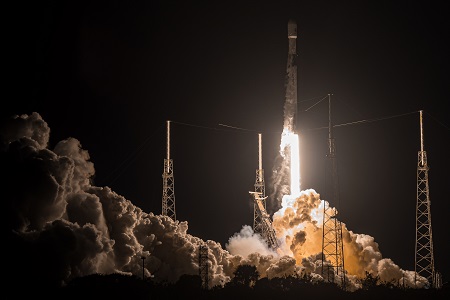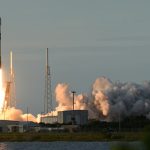The new I-6 satellites add further capabilities to Inmarsats Orchestra communications network.

Inmarsat has announced the successful launch of its latest I-6 F2 spacecraft from the Cape Canaveral Space Force Station aboard a flight-proven SpaceX Falcon 9 rocket.
The launch saw I-6 F2 lift off from Cape Canaveral, Florida, reaching a top speed of almost 40,000km/h as it left Earth above central Africa. The satellite will now spend several months travelling to its geostationary orbit, 36,000km above the Equator, using its onboard electric propulsion system. It will connect its first customers in 2024, following rigorous in-orbit technical testing.
I-6 F2 follows its twin, I-6 F1, which launched from Japan in late 2021. These commercial communications satellites will provide a revolutionary upgrade in Inmarsats global coverage services for at least the next 15 years. I-6 F1 is scheduled to connect its first customers later this year.
The new I-6 satellites add further capabilities to Inmarsats ORCHESTRA communications network; a global multi-dimensional, dynamic mesh network that will redefine connectivity at scale with the highest capacity for mobility worldwide. ORCHESTRA enables Inmarsats partners and customers to keep pace with their growing data demands and enables them to empower emerging technologies in the future, like autonomous vehicles or flying taxis.
Rajeev Suri, CEO of Inmarsat, said: I want to extend my profound thanks and appreciation to our dedicated employees and partners who have made this launch a reality. Our I-6 programme has been six years in the making. Last nights launch marked another milestone as we revolutionise global communications at scale.
Of course, this is not the end. Along with the I-6s, we will add five more advanced spacecraft to our fleet by 2025 as part of our fully funded technology roadmap. That will allow us to continue to meet our customers needs into the 2030s and beyond, while enabling new technologies for a smarter, more connected Earth.













































































